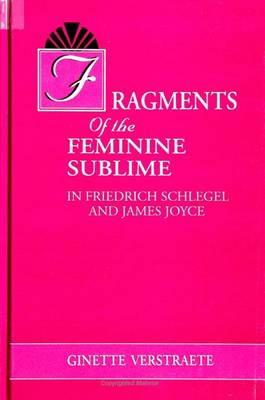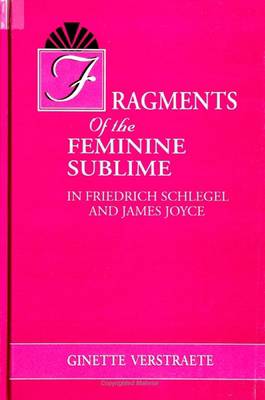
- Afhalen na 1 uur in een winkel met voorraad
- Gratis thuislevering in België vanaf € 30
- Ruim aanbod met 7 miljoen producten
- Afhalen na 1 uur in een winkel met voorraad
- Gratis thuislevering in België vanaf € 30
- Ruim aanbod met 7 miljoen producten
Fragments of the Feminine Sublime in Friedrich Schlegel and James Joyce
Ginette VerstraeteOmschrijving
Traces the early German Romantic origins of Joyce's modern and postmodern innovation of the novel.
This is the first book to extensively study Joyce's work in the context of Germanic Romantic literary theory. It illustrates how Joyce's modern and postmodern innovation of the novel finds its theoretical roots in Friedrich Schlegel's conception of the Romantic, fragmentary novel. Verstraete discusses the relevance of Schlegel's early Romanticism to the young Joyce's essays on symbolic-realistic drama and argues that what has traditionally been described as Joyce's personal appropriation of Hegel's dialectics can better be understood in terms of Schlegel's ironic approach to philosophy. She relates Schlegel's concepts of irony and of the fragment to his feminist critique of nineteenth-century bourgeois art, and of Kant's categories of the beautiful and the sublime. She argues that Schlegel's ironization of the sublime yields a rhetorical subversion of the opposition between male artist and female model, art and reality, as well as between the sublime and the beautiful. Verstraete illustrates this critical and political force of what she calls the "feminine sublime" at work in Schlegel's essays on Greek comedy and in his novel Lucinde. The book demonstrates how the Romantic (feminine) sublime, as the site where autonomous art generates its own critique, offers us the tools with which to interpret Joyce's postmodern innovations of Romantic art.
Specificaties
Betrokkenen
- Auteur(s):
- Uitgeverij:
Inhoud
- Aantal bladzijden:
- 280
- Taal:
- Engels
- Reeks:
Eigenschappen
- Productcode (EAN):
- 9780791436288
- Verschijningsdatum:
- 15/01/1998
- Uitvoering:
- Paperback
- Formaat:
- Trade paperback (VS)
- Afmetingen:
- 151 mm x 228 mm
- Gewicht:
- 385 g

Alleen bij Standaard Boekhandel
Beoordelingen
We publiceren alleen reviews die voldoen aan de voorwaarden voor reviews. Bekijk onze voorwaarden voor reviews.











